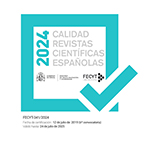Learning problems with three periphrases between Spanish and Italian. Acquisitional remarks and pedagogical proposals
Abstract
This study takes into consideration some particularly difficult and persistent acquisitional problems that Spanish-speakers learners of L2 Italian face. In literature, the phenomena of additive transfer of Spanish periphrastic structures not present in Italian is well documented. It is the case of andare and venire + gerund, "twin" structures of ir and venir + gerund: contemplated and frequent, in Spanish, in even low and neglected diaphasic contexts, such periphrases, in standard and neo standard Italian, display stronger contextual restrictions of use, and are today limited to high diaphasic varieties of Italian. For estar + gerund and stare + gerund - the third pair of periphrases considered in this study -, we note instead, in Italian, severe aspectual restrictions: estar + gerund expresses both the progressive and the continuative aspect, while stare + gerund has specialised only in the progressive aspect. This subtle divergence gives rise to typical Spanish-Italian transfer phenomena, clearly detectable in realisations such as *sono stato lavorando tutta la notte. The psycholinguistic interpretation of such acquisitional problems is based on the difficulty of identifying the evidence that can allow the restructuring of the interlanguage: in these three cases it is indirect negative evidence, that is, the non-appearance of the structures in certain contexts or incongruence with certain aspectual values. In order to alleviate the problems of additive transfer of the three periphrases, in this paper, after deepening the psycholinguistic aspects mentioned above, we will consider if and how the pedagogical grammars of Italian for foreigners - especially Spanish speakers - deal with these discrepancies between the two languages. Finally, we will propose some pedagogical interventions that can be useful to help Spanish-speaking learners to correctly analyse the Italian input, so as to alleviate the negative interference between the two languages.
Downloads
Article download
License
In order to support the global exchange of knowledge, the journal Cuadernos de Filología Italiana is allowing unrestricted access to its content as from its publication in this electronic edition, and as such it is an open-access journal. The originals published in this journal are the property of the Complutense University of Madrid and any reproduction thereof in full or in part must cite the source. All content is distributed under a Creative Commons Attribution 4.0 use and distribution licence (CC BY 4.0). This circumstance must be expressly stated in these terms where necessary. You can view the summary and the complete legal text of the licence.










